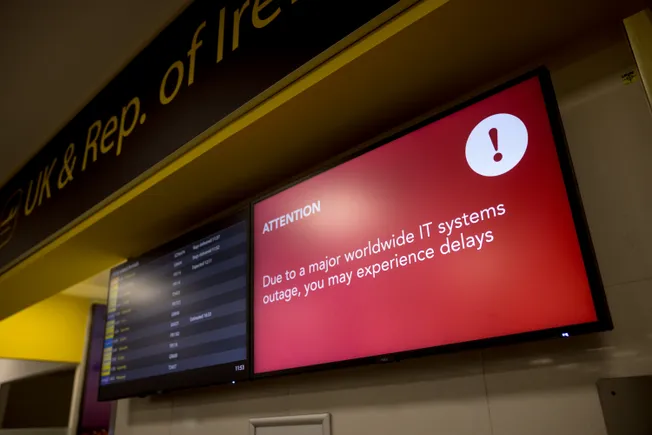If they have the right software tools, it’s likely that your team of HR professionals is tracking lots of valuable metrics, like time-to-hire and turnover rate. Those are important, but as an HR leader, keeping your eye on some less conventional metrics gives you an edge. You’ll get a different perspective of your workforce, which leads to more opportunities for creative problem-solving and informed decision-making.
Try tracking these eight HR metrics to better understand your employees and processes so you can fine-tune your talent management strategies.
1. Qualified Applicants per Open Position
It’s common to keep track of the number of applicants for every open position, but that doesn’t always tell you an accurate story. You might have 500 applicants for a role, but what if only 25 of them meet its minimum requirements? Tracking qualified applicants per open position gives you a much more accurate picture of the effectiveness — or ineffectiveness — of your current recruiting strategy.
2. Offer Acceptance Rate
It’s not easy to find top talent, especially if you’re looking for a specialized skill set or hiring in a competitive job market. You need a streamlined, engaging candidate experience and an employer brand that stands out. But even if you build a strong pool of qualified candidates, are they accepting your offers?
Monitoring job offer acceptance rates tells you if your recruitment strategies are helping secure signatures or costing you great people. Understand how often candidates are saying “yes” — or “no” — to help you spot potential issues with compensation, benefits, or the overall hiring process.
3. Internal Mobility Rate
Your internal mobility rate shows how often employees are hired into new roles within the company. This metric is comprised of promotions, lateral moves, and transfers to different departments or locations. Internal hiring is an excellent strategy for boosting employee engagement — while also saving time and money spent on recruiting. Internal hires also take less time to onboard, keeping productivity loss to a minimum.
Your internal mobility rate helps you see if your organization is providing enough growth opportunities to keep top talent. Check out your competitors’ rates to set a benchmark for your organization. If your rate is high, that shows your company is offering clear career paths and development opportunities. On the other hand, a low rate points to a lack of opportunities, which might mean your ambitious high performers are at risk of leaving for a company that invests in their growth.
4. Leadership Development Rate
Leadership development rate takes internal mobility metrics a step further. Instead of measuring all internal promotions and lateral transitions, this metric solely focuses on employees promoted into leadership positions. When you track the leadership development rate, you can prove that your organization is one that creates leaders.
That’s highly motivating for your employees, especially high performers, and has a big impact on your employer brand. When companies invest in employee training and development, 94% of workers say they’d stay with those companies longer. Imagine if your recruiters could tell candidates that 75% of company leadership was promoted from within.
5. Compensation Competitiveness Ratio (CCR)
To attract and win over top talent, you need to offer salaries that measure up to the competition. In many cities and states, companies are now required to list a salary range in their job descriptions, which makes it easy for job seekers to determine if applying is worth their time.
Calculate and track Compensation Competitiveness Ratios (CCR) regularly for both open and occupied roles to see if your salaries stack up. If not, it’s time to adjust your compensation packages to bring in the best applicants and retain your people.
6. High Performer Retention Rate
Retaining your best employees is just as important as recruiting and hiring them. High performer retention rate shows whether you’re holding on to your star employees or if they’re jumping ship for better opportunities elsewhere. You don’t want to keep these employees just because they’re productive. They also have a wealth of knowledge and depth of understanding of your company that’s impossible to replicate — and if you lose them, you lose all of that expertise, too.
It’s easy to track the different types of data to monitor this metric with talent management software with advanced analytics. The system can reference employees’ historical performance data, including performance review scores, to determine the average tenure of high performers.
This metric gives you the ability to take proactive steps to ensure your top talent feels valued and engaged, whether that’s through better development plans, leadership opportunities, or rewards for outstanding performance. If you aren’t retaining your best employees, it’s only a matter of time before it starts affecting business performance.
7. Employee Referral Rate
Does your organization have an employee referral program? If you do, do you know if it’s successful? The employee referral rate measures how often your current employees are bringing in new talent. They’re not likely to refer their family and friends if they’re unhappy with the company culture or work environment, so this metric also gives you some insight into employee engagement.
High referral rates typically correlate with an overall positive work experience and stronger employee engagement and satisfaction. On the other hand, if referral rates are low, you might have some culture or engagement issues to address. It could also mean your organization isn’t doing enough to spread the word about the referral program
Referred candidates can reduce your hiring costs and boost retention since their 46% retention rate is much higher than the 33% rate for candidates hired from job boards. With a great company culture and a strong referral program, you can build a pipeline of quality candidates and reinforce that positive culture.
8. Hiring, Pay Equity, and Promotion Rates by Demographic
Maintaining diversity, equity, inclusion, and belonging (DEIB) is an ongoing commitment, one that’s important to your people and beneficial to your business. Three out of four job seekers and employees prefer to work at diverse companies — which are 36% more likely to financially outperform less diverse companies. Part of this commitment includes the need to ensure fair, equitable practices in hiring, pay, and promotions.
When you track hiring, pay equity, and promotion rates by demographic, you can identify whether any groups of people are underrepresented, undervalued, or lacking advancement opportunities. This data can highlight gaps in your hiring processes, compensation structures, and career pathways so you can ensure that all employees, regardless of their background, have equal opportunities for success.
If the data reveals disparities, it’s a clear signal to take action. Addressing these gaps helps create a more inclusive workplace and improves overall employee morale, trust, and retention.
Advanced Analytics for HR
You can start tracking and analyzing the HR metrics that matter to your organization with advanced analytics software. With the right tech tools, these key HR metrics become accessible — a nearly unlimited resource you can draw on to inform your people policies and initiatives. ClearCompany’s cutting-edge, AI-powered HR analytics sidekick, ClearInsights, is a first-of-its-kind solution that makes in-depth analysis possible — no special skills required.
Talk to one of our experts about how ClearInsights can change the way you see your data.






Leave a Reply